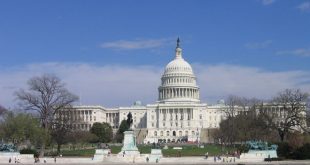“Affirmative action” is a euphemism for preferring one job candidate or college applicant over another based on race. The actual name for this government policy is racial preferences. It’s also racial discrimination.
The policy began many years ago (see brief history) when the government sought to “cast a wider net” to include in the hiring and admitting process black Americans who’d historically been excluded. The idea was to find well-qualified racial minorities. But that plan unraveled when they couldn’t find enough to reach their goal. Under affirmative action, the government lowers standards to hire and admit more of certain kinds of minorities.
The problem is obvious. Hiring or admitting individuals based on race means other candidates are rejected based on race. It is inherently unfair, and all Americans should reject government-sanctioned racial discrimination in contracting, hiring, and college admissions. Law and government policies should be racially neutral; all taxpayers should demand it.
Students of East Asian descent tend to outscore whites, blacks, Hispanics, and other ethnic applicants, so college admissions committees use a higher standard to evaluate them. But things could change for the better. President Donald Trump reversed Barack Obama’s “guidelines” that called on colleges and universities to consider an individual applicant’s race when making decisions to admit or reject.
Some argue that this policy goes beyond discrimination. It harms the so-called beneficiaries.
UCLA law professor Richard Sander (and Stuart Taylor) argued that applicants with lower academic credentials would perform better if they were admitted to colleges that matched their academic performance. Instead, they’re accepted to schools too rigorous for their aptitude and end up at the bottom of their class. This is the “mismatch” effect.
And there are the assumptions associated with racial preferences. Kenny Xu, writing at the Daily Signal, told a story about Justice Clarence Thomas and affirmative action (emphasis added):
Supreme Court Justice Clarence Thomas once recounted the time when his Juris Doctor degree from Yale Law School was dismissed from nearly every law firm he considered.
The interviewers, believing him to be a beneficiary of Yale’s aggressive affirmative action policies, which de-emphasized LSAT scores and grades for black students, questioned him pointedly about his qualifications and “doubted I was as smart as my grades indicated,” Thomas wrote in his memoir.
According to Thomas, Yale’s affirmative action quotas had relaxed the standards for his race so much that his achievements were stigmatized and not acknowledged by high society.
After this experience, Thomas pasted a 15-cent sticker he got from a pack of cigarettes next to his Yale Law School degree, as an indication of the mistake he made going to Yale.
Such assumptions about racial preferences are rational.
Rejected students have sued over the years. More recently, a group called Students for Fair Admissions sued Harvard University (a lawsuit backed by the Trump administration’s U.S. Department of Justice) for racial discrimination, accusing the school of favoring black and Hispanic applicants over white and Asian applicants.
Xu gets to the why of racial preferences, despite the obvious problems.
Part of the reason is that diversity sells. Colleges care deeply about their brand and image, and one of the most effective ways to reach socially conscious prospective students’ (and their parents’) hearts and wallets is tout the surface-level diversity of their class.
Increasing racial diversity supposedly is important enough to violate the U.S. Constitution, denying individuals jobs and school placement based on the color of their skin, a government practice Americans fought and died to end during the 1960s civil rights movement. But liberals of all colors love it, and they continue to support it.
 Black Community News News and Commentary for Christians
Black Community News News and Commentary for Christians




My father was active in the civil-rights movement in the 1960s and we attended several marches together. In the 1970s we were both dismayed when the movement devolved into “affirmative action” and “diversity” at the expense of individual rights.
Especially sad and absurd was the spectacle of elementary-school kids being bused all over town to achieve “racial balance,” when what was really needed was improvement of inner-city schools – at the same time that black college students were demanding their own dorms, in effect returning to racial segregation.
Justice Thomas’ difficulties gaining employment after college may be indicative of the ongoing job discrimination against African Americans as a result of affirmative action. But one problem: Said education/employment discrimination against Blacks was very common decades prior to affirmative action.
Affirmative action has done more to promote racial harmony and inclusiveness (both in education and employment) than any negative consequences associated with the policy. If anything, our Fair Housing Laws and Americans with Disabilities Act are byproducts of government-approved affirmative action.
Years ago, I worked at a state university. A young man with a sports scholarship, who was admitted because of the schools Affirmative Action policies, came to me new the end of his first year and said he didn’t think he could keep up with the work. He felt if he finished out the semester he would finish below the required GPA to keep a sports scholarship and he would lose it. He then would have to drop out. He was nearly in tears, not for himself, but he felt he had let his whole family down and he didn’t know how he was going to go home a failure. This kid almost had me in tears. I told him him he could probably take an incomplete and we could see about some tutoring. He felt he would need at least two years. He didn’t take a language in high school and he wasn’t up to college math. make a long story short, universities, especially those with a championship basketball team, can pull all the strings they need to to help kids they want to help and the most powerful person in such a university is the athletic director. He was a good kid, got along with his classmates, he was a team player, he had the soft skills you can’t teach. This story had a happy ending. He did get the help he needed and then some extras! He did stay and graduate.
The point of this story is that if grades K-12 weren’t dumbed down—with race-based discipline, social promotion—and they need to bring back “Hooked on Phonix?” Whatever they’re doing know isn’t working. I have a friend who is a teacher in NYC and she told me there are teachers who can’t pass their recertification tests! We have a serious problem out here with Marxist infiltration into the public school system as well. That’s what “Red4Ed” was all about.
If these kids were being taught when they need to make the grade there would be no need for race-based preferences. Yes, more kids were going to college at that time, but nobody talks about the ones that end up dropping out or having to pay for a year or two of remedial classes. Why, when a city like New York, for example, now spends $22K per student per year on education? Why is lowering standards still necessary? Other states like where I live now, Arizona, spends around $7,490. Our charter schools do better but this is too low. There are some states that are in between. If the Big Tech still says they can’t find Americans with the skills for what they need, then money is not the issue. Test scores are not the only thing that a university looks at when deciding admission. They want well rounded individuals as well. If K-12 don’t prepare our young people to get into college and be on a college level, they what good is Affirmative Action? If something isn’t done about these problems, I pray for our kids and our country.